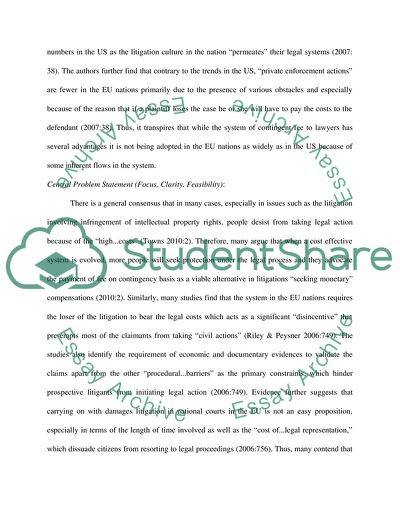Cite this document
(Pros and Cons of Lawyer Contingent Fees in EU Countries Research Proposal, n.d.)
Pros and Cons of Lawyer Contingent Fees in EU Countries Research Proposal. https://studentshare.org/law/1819083-contingent-fees-for-lawyers-in-the-eu-are-exceptions-granted-in-the-right-circumstances
Pros and Cons of Lawyer Contingent Fees in EU Countries Research Proposal. https://studentshare.org/law/1819083-contingent-fees-for-lawyers-in-the-eu-are-exceptions-granted-in-the-right-circumstances
(Pros and Cons of Lawyer Contingent Fees in EU Countries Research Proposal)
Pros and Cons of Lawyer Contingent Fees in EU Countries Research Proposal. https://studentshare.org/law/1819083-contingent-fees-for-lawyers-in-the-eu-are-exceptions-granted-in-the-right-circumstances.
Pros and Cons of Lawyer Contingent Fees in EU Countries Research Proposal. https://studentshare.org/law/1819083-contingent-fees-for-lawyers-in-the-eu-are-exceptions-granted-in-the-right-circumstances.
“Pros and Cons of Lawyer Contingent Fees in EU Countries Research Proposal”. https://studentshare.org/law/1819083-contingent-fees-for-lawyers-in-the-eu-are-exceptions-granted-in-the-right-circumstances.


